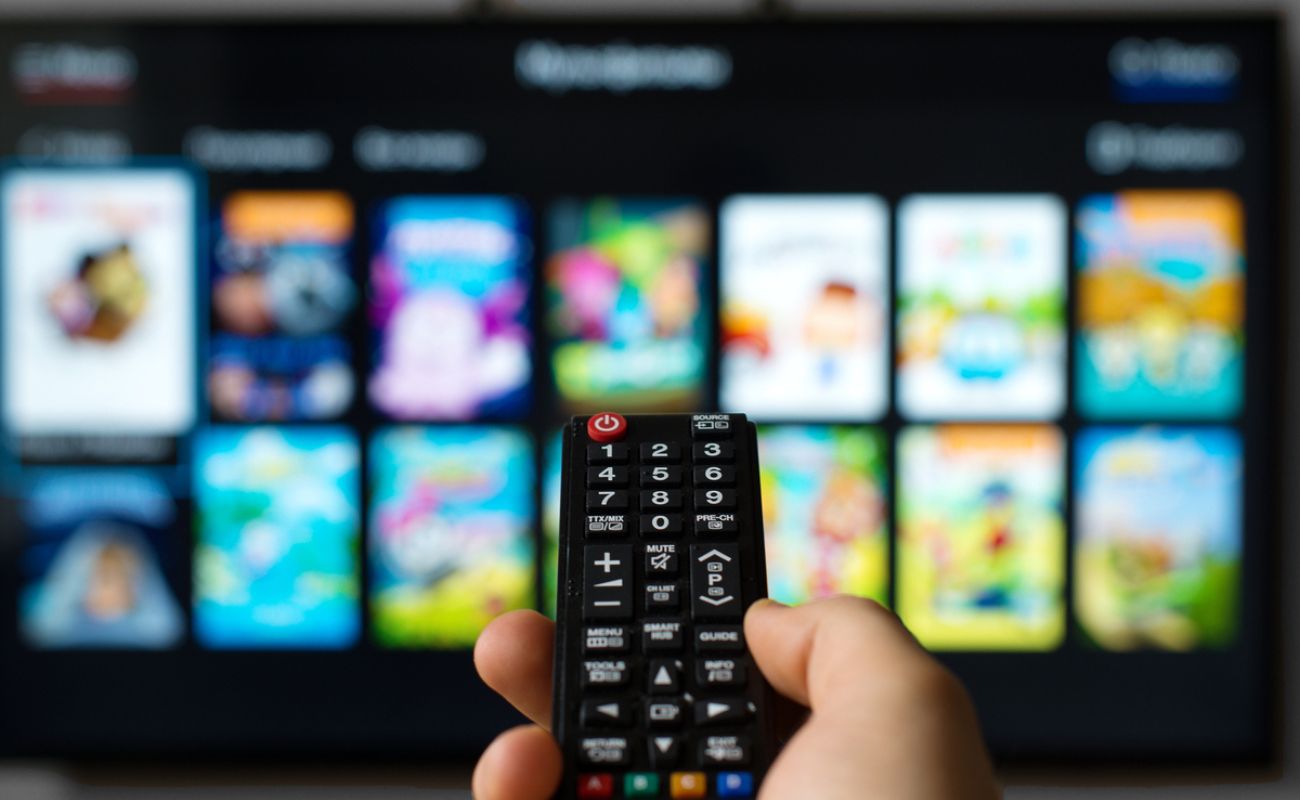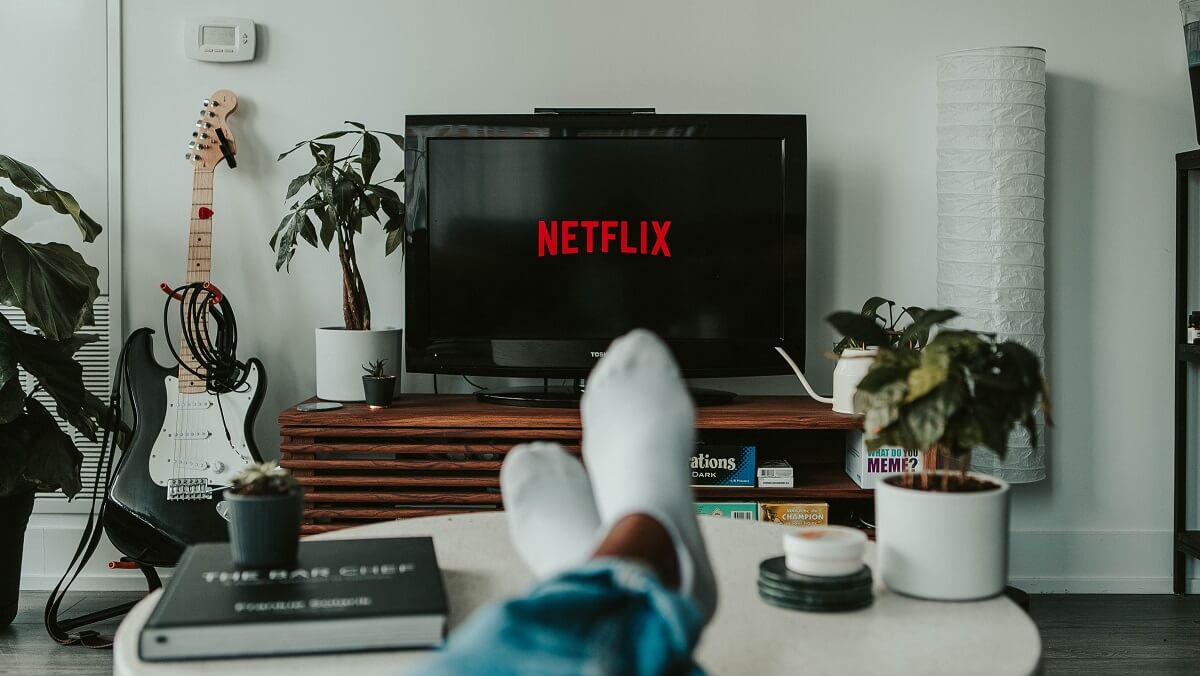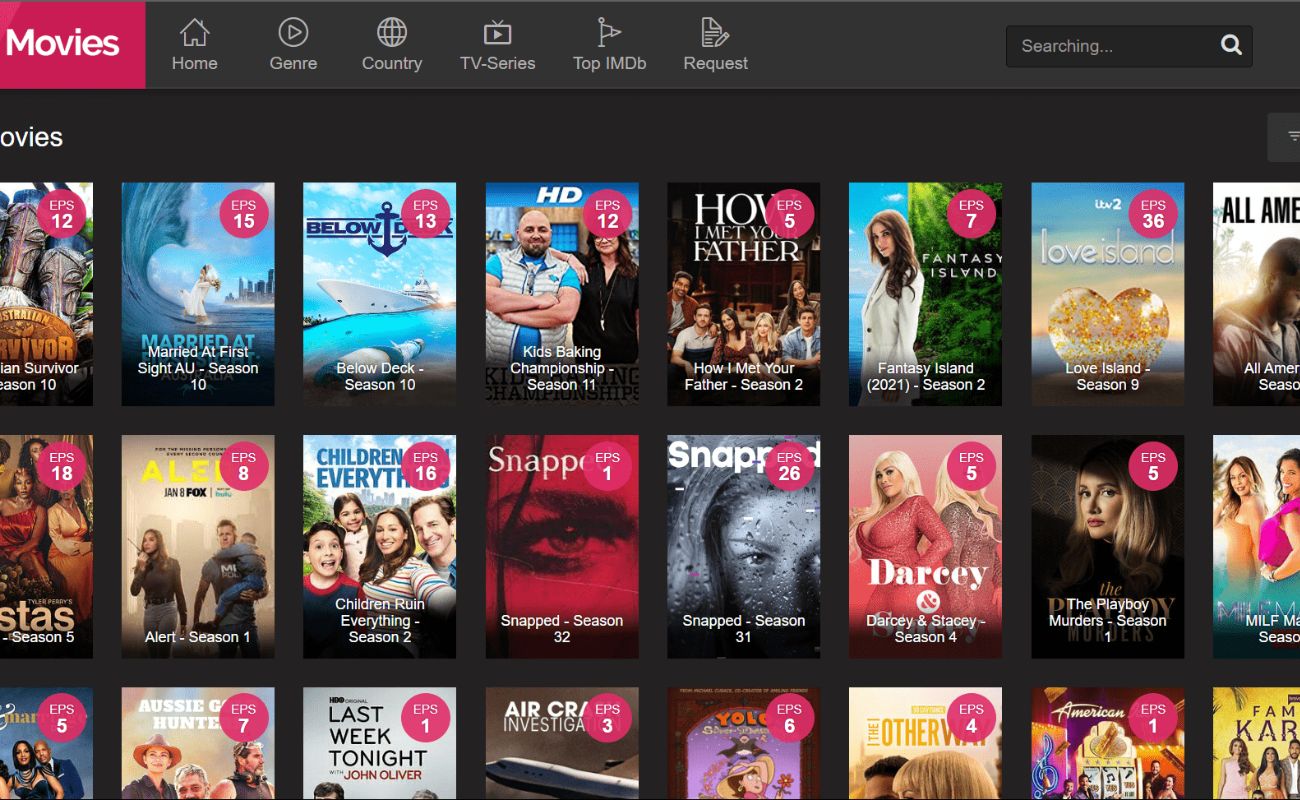Home>Technology>Home Entertainment Systems>How Many People Watch Television A Day


Home Entertainment Systems
How Many People Watch Television A Day
Modified: October 19, 2024
Discover the latest statistics on home entertainment systems and learn how many people watch television every day. Explore the impact of home entertainment on daily viewing habits.
(Many of the links in this article redirect to a specific reviewed product. Your purchase of these products through affiliate links helps to generate commission for Storables.com, at no extra cost. Learn more)
Introduction
Television has been a staple of entertainment and information for decades, captivating audiences with its diverse array of programming. From the early days of black-and-white sets to today's high-definition screens, television has evolved to become an integral part of daily life for millions of people around the world. The impact of television on society is profound, influencing everything from cultural norms and consumer behavior to political discourse and global awareness.
Television is not just a source of entertainment; it serves as a window to the world, providing viewers with insights into different cultures, perspectives, and experiences. Whether it's the latest news, thought-provoking documentaries, or compelling dramas, television has the power to inform, inspire, and entertain. As technology continues to advance, the ways in which people consume television content are constantly evolving, with streaming services, on-demand programming, and interactive experiences reshaping the landscape of home entertainment.
In this article, we will delve into the impact of television on society, explore the latest statistics on television viewing habits, examine the factors that influence these habits, and consider the future of television viewing. By gaining a deeper understanding of the role television plays in our lives, we can appreciate its significance and anticipate the ways in which it will continue to shape our world in the years to come. So, grab your remote, settle into your favorite spot on the couch, and let's embark on a journey through the fascinating world of television.
Key Takeaways:
- Television remains a powerful force, shaping society and offering diverse content. Its future holds immersive experiences, personalized curation, and inclusive storytelling, captivating audiences worldwide.
- Television viewing habits are influenced by technology, demographics, and societal trends. As streaming dominates, immersive technologies and diverse content offerings promise a dynamic and engaging future.
The Impact of Television on Society
Television wields a profound influence on society, shaping perceptions, behaviors, and cultural dynamics in myriad ways. One of its most significant impacts is its ability to disseminate information and shape public opinion. From breaking news coverage to in-depth investigative journalism, television serves as a primary source of current events and societal discourse. It has the power to raise awareness about critical issues, spark conversations, and mobilize communities toward collective action.
Beyond its role in information dissemination, television also plays a pivotal part in shaping cultural norms and values. Through a diverse range of programming, including sitcoms, dramas, reality shows, and documentaries, television reflects and refracts societal attitudes, beliefs, and aspirations. It has the capacity to both reinforce existing cultural narratives and challenge prevailing stereotypes, fostering inclusivity and empathy among viewers.
Moreover, television serves as a catalyst for social change by spotlighting underrepresented voices and advocating for marginalized communities. Thought-provoking documentaries and socially conscious programming have the potential to ignite movements, foster understanding, and drive positive societal transformations. By amplifying diverse perspectives and experiences, television contributes to a more inclusive and empathetic society.
Furthermore, television exerts a substantial influence on consumer behavior and lifestyle choices. Advertisements and product placements showcased during programming can shape viewers’ preferences, purchasing decisions, and lifestyle aspirations. Television’s portrayal of fashion, trends, and consumer culture can significantly impact societal norms and individual choices, influencing everything from fashion trends to culinary preferences.
Additionally, television serves as a unifying force, bringing people together through shared cultural experiences. Whether it’s gathering around the screen for a beloved series finale or tuning in to watch a monumental live event, television fosters a sense of community and shared connection, transcending geographical boundaries and fostering collective experiences.
Ultimately, the impact of television on society is multifaceted and far-reaching, encompassing information dissemination, cultural representation, social advocacy, consumer influence, and communal cohesion. As television continues to evolve in the digital age, its influence on society will undoubtedly persist, shaping the collective consciousness and cultural landscape for generations to come.
Television Viewing Statistics
Television viewing statistics offer valuable insights into the habits and preferences of audiences, shedding light on the evolving landscape of home entertainment. While the rise of digital streaming platforms and on-demand content has transformed the way people consume media, television remains a dominant force in the realm of entertainment. Here are some compelling statistics that illustrate the enduring relevance of television:
- Global Viewership: Television continues to captivate a vast global audience, with billions of viewers tuning in to a diverse array of programming across continents. From primetime dramas to live sports events, television maintains its status as a ubiquitous medium for entertainment and information.
- Viewing Platforms: While traditional cable and satellite television services remain prevalent, the proliferation of streaming services has reshaped the viewing landscape. Platforms such as Netflix, Hulu, Amazon Prime Video, and Disney+ have expanded the options available to viewers, offering on-demand access to a wealth of content.
- Live Events and Broadcasts: The allure of live television events, including award shows, sports championships, and breaking news coverage, continues to draw substantial viewership. These communal viewing experiences contribute to the enduring appeal of television as a shared cultural touchstone.
- Demographic Trends: Television viewing habits vary across demographic groups, with distinct preferences emerging among different age cohorts. While younger audiences gravitate toward digital streaming and mobile viewing, older demographics often exhibit a preference for traditional television viewing on larger screens.
- Time Spent Watching: On average, individuals across diverse demographics spend a significant portion of their leisure time engaging with television content. Whether it’s binge-watching a series, catching up on the latest news, or enjoying family movie nights, television remains a central fixture in many households.
These statistics underscore the enduring appeal and adaptability of television as a medium, showcasing its ability to evolve alongside technological advancements and shifting consumer preferences. As the entertainment landscape continues to evolve, television remains a cornerstone of home entertainment, offering a rich tapestry of content that resonates with audiences of all ages and backgrounds.
According to Nielsen, the average American watches about 4 hours of TV per day. This can vary depending on age, gender, and other factors.
Factors Affecting Television Viewing Habits
Television viewing habits are influenced by a myriad of factors that encompass technological advancements, societal trends, and individual preferences. Understanding the dynamics that shape these habits provides valuable insights into the evolving nature of home entertainment. Here are several key factors that impact television viewing habits:
- Technological Innovation: The advent of smart TVs, streaming devices, and on-demand services has revolutionized the viewing experience, offering viewers unprecedented flexibility and convenience. The accessibility of streaming platforms and the ability to personalize content consumption have redefined how individuals engage with television programming.
- Shifts in Content Consumption: Changing consumer preferences and the proliferation of alternative entertainment options, such as online video content and social media, have contributed to shifts in television viewing habits. Viewers now have the freedom to curate their viewing experiences, opting for personalized content selections that align with their interests.
- Demographic Diversity: Television viewing habits vary across demographic segments, with factors such as age, household composition, and cultural background influencing preferences. Younger audiences often gravitate toward digital streaming and mobile viewing, while older demographics may exhibit a preference for traditional television viewing habits.
- Social and Cultural Influences: Societal trends, cultural movements, and prevailing social norms play a significant role in shaping television viewing habits. The representation of diverse voices and experiences in programming, as well as the resonance of content with societal narratives, can influence viewers’ engagement with television.
- Lifestyle and Time Constraints: Busy lifestyles and time constraints impact television viewing habits, with individuals seeking on-demand and time-shifted viewing options to accommodate their schedules. The ability to access content at any time and from any location has become increasingly important in catering to modern lifestyle demands.
- Advertising and Marketing: The influence of advertising and marketing strategies on television viewing habits is substantial. Effective promotional campaigns, product placements, and brand partnerships can sway viewers’ choices and preferences, impacting their engagement with specific programming and content genres.
These factors collectively contribute to the dynamic landscape of television viewing habits, highlighting the interplay between technological advancements, societal influences, and individual behaviors. As the home entertainment ecosystem continues to evolve, understanding these factors is crucial for content creators, broadcasters, and streaming platforms seeking to engage and resonate with diverse audiences.
The Future of Television Viewing
The landscape of television viewing is undergoing a transformative evolution, propelled by technological innovation, shifting consumer behaviors, and the convergence of digital media platforms. As we peer into the future of television, several compelling trends and developments emerge, shaping the trajectory of home entertainment in the years to come.
- Streaming Dominance: The dominance of streaming services is poised to continue, with on-demand content consumption becoming increasingly prevalent. As streaming platforms offer a vast array of original programming, personalized recommendations, and seamless user experiences, viewers are empowered to tailor their entertainment choices to align with their preferences.
- Convergence of Media: The convergence of television, online video, and social media platforms is blurring traditional boundaries, creating a dynamic ecosystem where content seamlessly transitions across diverse mediums. This convergence fosters new modes of engagement and interactivity, reshaping the ways in which audiences interact with and consume television content.
- Immersive Viewing Experiences: Technological advancements, such as augmented reality (AR), virtual reality (VR), and interactive storytelling, are poised to revolutionize television viewing experiences. These immersive technologies offer unprecedented levels of engagement, transporting viewers into rich, interactive narratives and virtual environments.
- Personalized Content Curation: The future of television viewing revolves around personalized content curation, driven by sophisticated algorithms and artificial intelligence. Viewers can expect tailored recommendations, content discovery features, and curated playlists that cater to their unique tastes and viewing habits.
- Interactive and Social Viewing: The integration of social viewing experiences and interactive elements within television content is set to become increasingly prevalent. Viewers can look forward to enhanced social sharing features, real-time audience participation, and collaborative viewing experiences that transcend traditional solitary consumption.
- Diverse Content Ecosystem: The future of television will witness an expansion of diverse and inclusive content offerings, amplifying underrepresented voices and narratives. As the industry embraces inclusivity and representation, viewers can anticipate a rich tapestry of stories that resonate with diverse cultural, social, and demographic backgrounds.
These future trends collectively paint a picture of a dynamic and multifaceted television landscape, characterized by personalized experiences, immersive storytelling, and a convergence of media platforms. As the boundaries between traditional television and digital media continue to blur, the future of television viewing holds boundless potential for innovation, creativity, and meaningful audience engagement.
Read more: How Many People Are In The Garden
Conclusion
Television, with its enduring influence and adaptability, continues to be a cornerstone of home entertainment, shaping societal discourse, cultural narratives, and individual experiences. From its profound impact on public opinion and social change to its role in fostering communal connections and shared experiences, television occupies a central space in the fabric of modern society.
As we navigate the ever-evolving landscape of television viewing, it becomes evident that the future holds a wealth of transformative possibilities. The convergence of digital media platforms, the rise of immersive technologies, and the amplification of diverse voices are poised to redefine the television experience, offering viewers unprecedented levels of engagement, personalization, and connectivity.
Moreover, the factors that influence television viewing habits, from technological innovations to demographic diversity, underscore the dynamic interplay between individual preferences, societal influences, and industry trends. Understanding these dynamics is essential for content creators, broadcasters, and streaming platforms seeking to engage and resonate with diverse audiences in an increasingly interconnected world.
As we embark on this journey through the fascinating world of television, it is clear that the medium’s significance transcends mere entertainment. It serves as a mirror reflecting our collective aspirations, a catalyst for social change, and a unifying force that bridges geographical and cultural divides. The future of television viewing promises a tapestry of inclusive, immersive, and personalized experiences that will continue to captivate and inspire audiences around the globe.
So, whether you’re tuning in to the latest binge-worthy series, sharing in the excitement of a live event, or engaging with thought-provoking documentaries, television remains a conduit for connection, exploration, and shared storytelling. As we embrace the future of television viewing, let’s celebrate the enduring impact of this beloved medium and the boundless potential it holds for enriching our lives and broadening our perspectives.
Frequently Asked Questions about How Many People Watch Television A Day
Was this page helpful?
At Storables.com, we guarantee accurate and reliable information. Our content, validated by Expert Board Contributors, is crafted following stringent Editorial Policies. We're committed to providing you with well-researched, expert-backed insights for all your informational needs.















0 thoughts on “How Many People Watch Television A Day”